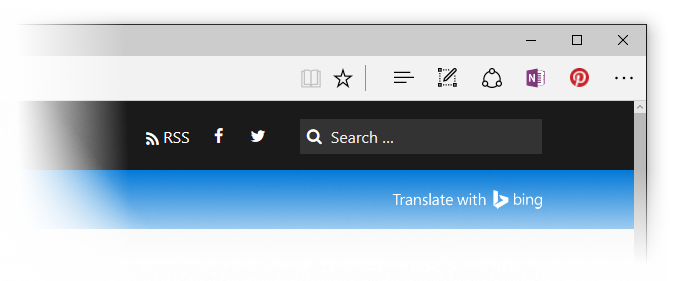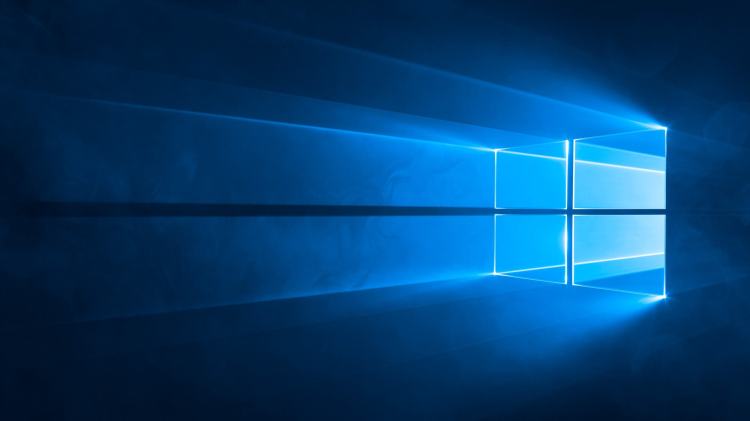Microsoft today released a new Windows 10 preview for PCs. This is the first build released since Build 2016, where the company announced the Windows 10 Anniversary Update coming this summer.
Windows 10 is a service. As we wrote in our deep dive on how Microsoft is still building Windows 10, this means Windows Insiders are getting new builds even though the operating system launched in July 2015.
First up, you can now natively run Bash in Windows. To do this, you first need to turn on Developer Mode (Settings => Update & security => For developers), search for “Windows Features,” choose “Turn Windows features on or off,” and enable Windows Subsystem for Linux (Beta). To get Bash installed, open Command Prompt and type in “bash.”

Next up, Cortana has received new cross-device features for Windows and Android phones (limited to the U.S. and China, requires Cortana version 1.5):
- Low Battery Notifications: Cortana will now inform you of low battery power on your mobile devices: A notification will pop up on your PC so you can plug in your phone.
- Find my phone/Ring my phone: Ask Cortana on your PC to find your phone. The feature allows users to locate their phone from their PC through geo-location and by having Cortana ring their phone.
- Share map directions across devices: Tell Cortana “directions to *place*” on your PC and she’ll send those same directions to your phone.
https://www.youtube.com/watch?v=zbZ1xS1Kc6o
Cortana is now also easier to set up on your device. Cortana now automatically downloads the necessary speech language in your market and doesn’t require mucking through all the settings to get her going on.
Microsoft has added two new Edge extensions to try: Pin It Button and OneNote Clipper. The existing three extensions have also been updated: Reddit Enhancement Suite, Mouse Gestures, and Microsoft Translator. To install an extension, click on “More” at the top right in Microsoft Edge, click “Extensions” to open the Extensions pane, and click “Get extensions.”

The new universal Skype app is now available. The basic Skype functionality is available, but more features and functionality is coming in the next couple of releases (in addition to availability for mobile).
The Action Center has received a few improvements: You can now manage the notification settings for individual apps (Settings => System >= Notifications & actions) by clicking or tapping on a specific app to adjust its notification settings. You can prioritize notifications in Action Center to be one of three levels (Normal, High, or Priority) and also adjust how many notifications are visible per app (default is three). If an app has more than three notifications, just click or tap to expand and see all notifications for that app.

The entire set of font-based emoji in Windows 10 has been updated to align with the Microsoft Design Language. The company is claiming “a distinct visual style” that features “detailed, expressive, and playful” emoji.

There are also some personalization improvements. You can now toggle between dark and light modes (Settings > Personalization > Colors). The new dark mode affects apps such as Settings, Store, Alarms & Clock, Calculator, and other universal apps that listen and respond to theme changes in the operating system. A new option also lets you show color only on app title bars in addition to the option to show color on Start, the taskbar, and Action Center.

The new Connect app lets you use your Windows 10 phone with Continuum without needing a dock or Miracast adapter. You can use Miracast-enabled PCs to project to other PCs without needing a dock or Miracast adapter as well. This is an early preview of this feature, and it’s meant to be wireless-only.

The virtual desktop feature has also been improved. You can now pin a window so it’s available on every desktop (launch Task View, right-click on the window you, and choose “Show this window on all desktops”).

The Battery Saver settings page has been renamed as just Battery. On the Detailed Battery Use page, you can now manage the per-app background settings inline without going to a second page. But more interestingly, Managed by Windows is a new option where not only will the app stop running in the background when Battery Saver is enabled, but it will temporarily turn off apps with high battery drain that you haven’t used in a while or pinned to your Start screen till you next launch the application. There’s also a new prompt asking the user if they’d like to turn on Battery Saver when battery is at 20 percent (a feature in Windows Phone 8.1 that many wanted on both Windows 10 for PC and Windows 10 Mobile).
This build also includes the following bug fixes:
- The issue where on some PCs with TPM chips, such as the ASUS Zenbook UX31, you may have experienced glitchy audio and jumpy movement when using the trackpad due to the “tpm-maintenance” task running constantly in the background instead of once per boot-up like it should.
- The issue where if you use Hyper-V and have a Virtual Switch configured for your network adapter, you might see an error indicator (red-colored X) for your network adapter in the notification area of your taskbar.
- The Wi-Fi flyout UI and fixed an issue where text entry into a Wi-Fi password field was noticeably top-aligned rather than centered.
- An issue when using multiple monitors and full-screen apps like PowerPoint or Remote Desktop would crash Windows Explorer.
- An issue where Cortana wasn’t showing Settings pages in the search results.
- The Windows Update notification for updates being installed now takes you straight to your update history.
- An issue where desktop (Win32) apps pinned to the Start menu would sometimes move after updating to a new build.
- An issue where “Update and Restart” and “Update and Shut Down” wouldn’t start an update.
Microsoft is aware of five issues in this build on PC:
- The Visual Studio emulator for Windows 10 Mobile and HoloLens will fail with “An authentication error has occurred. The Local Security Authority cannot be contacted.”
- Issues with Narrator and other screen reader apps that make them unable to read selected text in the Feedback Hub, Cortana, and other apps.
- In Microsoft Edge, some large downloads may appear to get stuck at 99 percent completion. You can work around this issue by renaming the file in your downloads after closing Microsoft Edge.
- In some cases, attempting to turn on Developer Mode on may crash the Settings app. If this happens, the workaround is to use these steps here to enable Developer Mode.
- Some apps notifications may only show the icon — however, the full text of the notification will be visible within Action Center.
Today’s update bumps the Windows 10 build number from 14295 for PC (made available to testers on March 25) to build 14316.
As you can see, it’s a large update, especially for PC users.
VentureBeat's mission is to be a digital town square for technical decision-makers to gain knowledge about transformative enterprise technology and transact. Learn More

